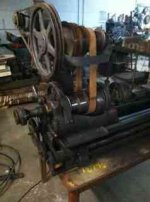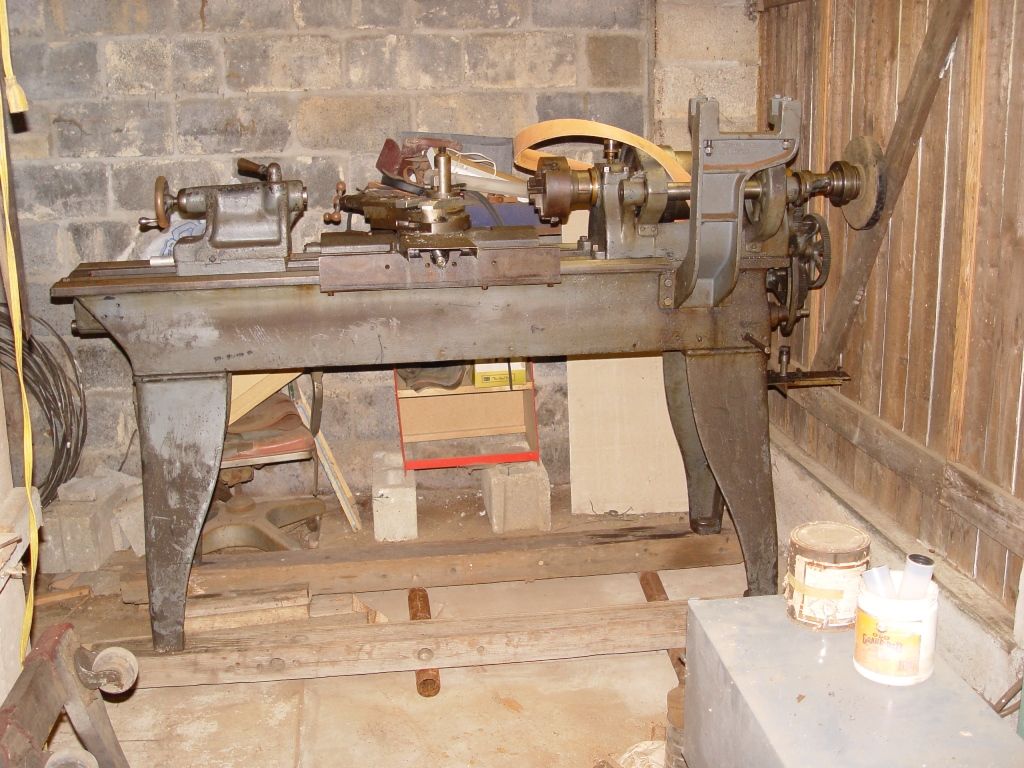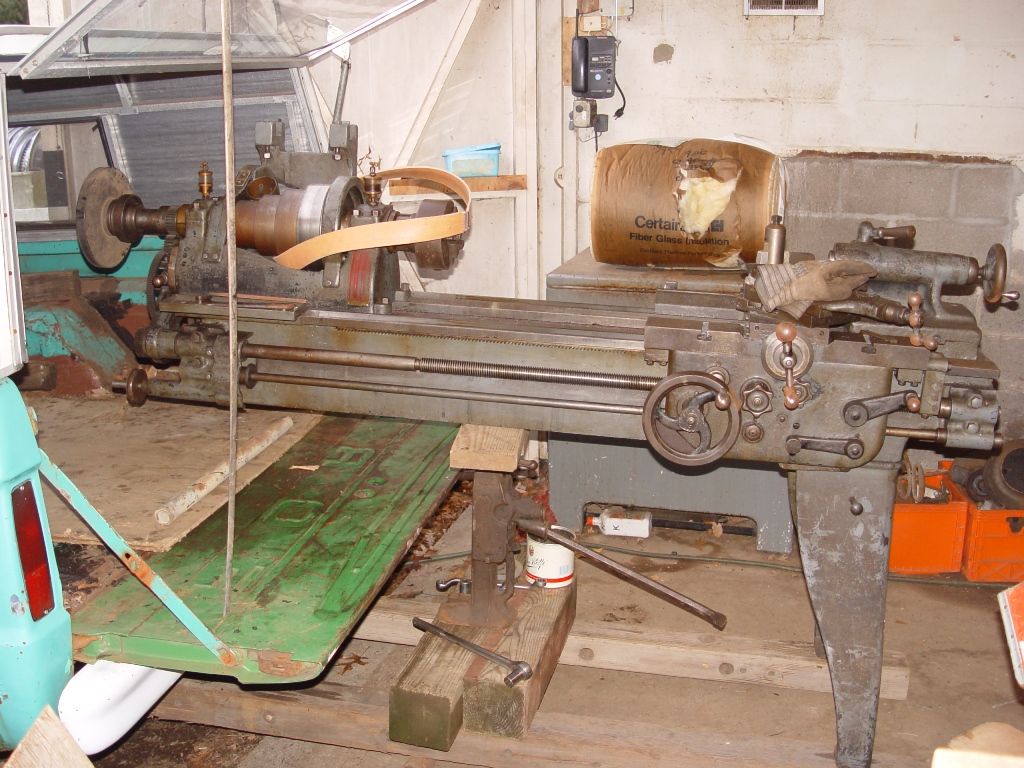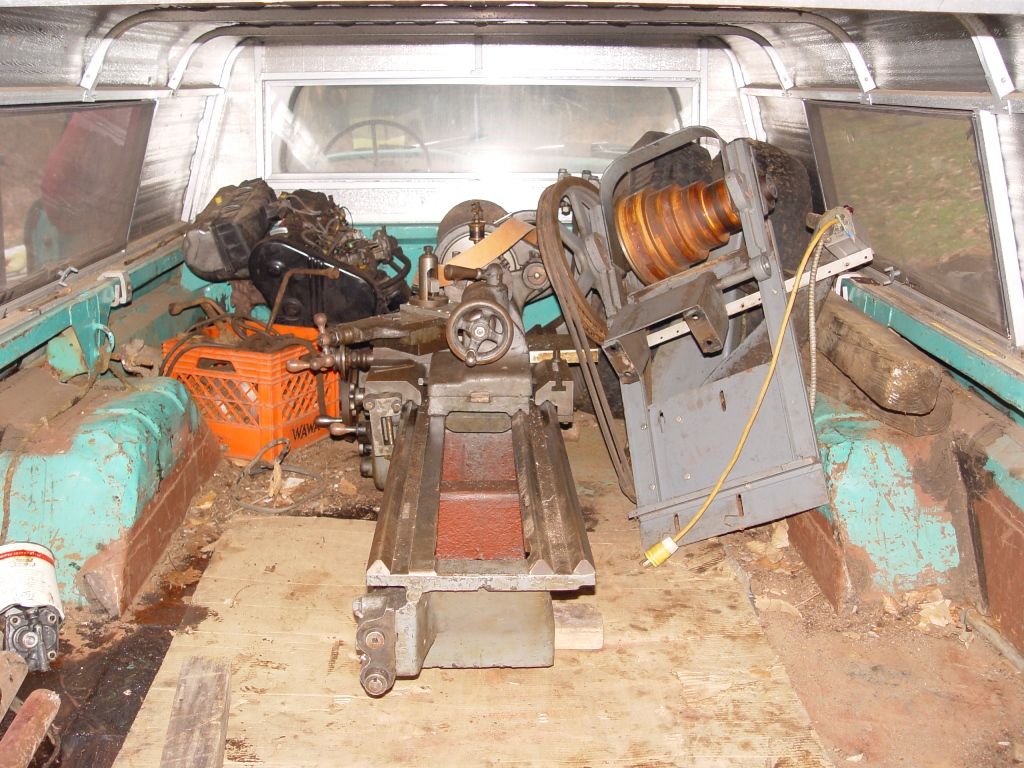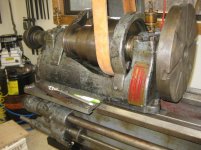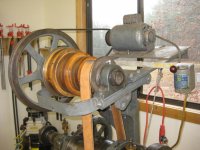kbrider
Plastic
- Joined
- Dec 12, 2013
- Location
- central VA
Hi all -- this is my first post. I have been lurking on and off for a long time. In my last job I had free access to a shop that had a Nardini 14x40 lathe and a Microcut mill. Both were from the late 1980's and were nearly unused when I started working with them in 2001. After leaving that job in May 2013 I was latheless except for a cheap wood lathe in my home shop.
Last weekend I picked up a Monarch Model A from a CL ad. It is Lot 144, No. 120. The legs were missing, so I am building a stand for it. It came bolted onto oak table that was heavy duty for household furniture, but a mite wobbly with a lathe on it.
I also picked up two chucks, two or three faceplates, and a mess of change gears. It was running with a 1HP motor and the feeds worked, but the motor might be underpowered. It is hooked up through an overhead jackshaft that has a wooden step pulley to drive a flat belt. I could only find one gear tooth that was chipped and the bearings seemed fairly tight. I couldn't detect any slop when I grabbed the chuck and shook it.
Getting it out of my pickup with a 1 ton engine hoist was a trick. I ended up taking off the headstock, motor, jackshaft, and tailstock. There were some shims under the front edge of the headstock, so I have been reading various posts on how to do a headstock alignment. I think that Rollie's Dad's Method makes sense as a way to get it set up without having a whole lot of precision tools available. The folks at my old job would probably loan out the precision level, DTI, and micrometer if I asked them.
Any advise? BTW - I think this thing was made about 1915-1920.
Last weekend I picked up a Monarch Model A from a CL ad. It is Lot 144, No. 120. The legs were missing, so I am building a stand for it. It came bolted onto oak table that was heavy duty for household furniture, but a mite wobbly with a lathe on it.
I also picked up two chucks, two or three faceplates, and a mess of change gears. It was running with a 1HP motor and the feeds worked, but the motor might be underpowered. It is hooked up through an overhead jackshaft that has a wooden step pulley to drive a flat belt. I could only find one gear tooth that was chipped and the bearings seemed fairly tight. I couldn't detect any slop when I grabbed the chuck and shook it.
Getting it out of my pickup with a 1 ton engine hoist was a trick. I ended up taking off the headstock, motor, jackshaft, and tailstock. There were some shims under the front edge of the headstock, so I have been reading various posts on how to do a headstock alignment. I think that Rollie's Dad's Method makes sense as a way to get it set up without having a whole lot of precision tools available. The folks at my old job would probably loan out the precision level, DTI, and micrometer if I asked them.
Any advise? BTW - I think this thing was made about 1915-1920.


